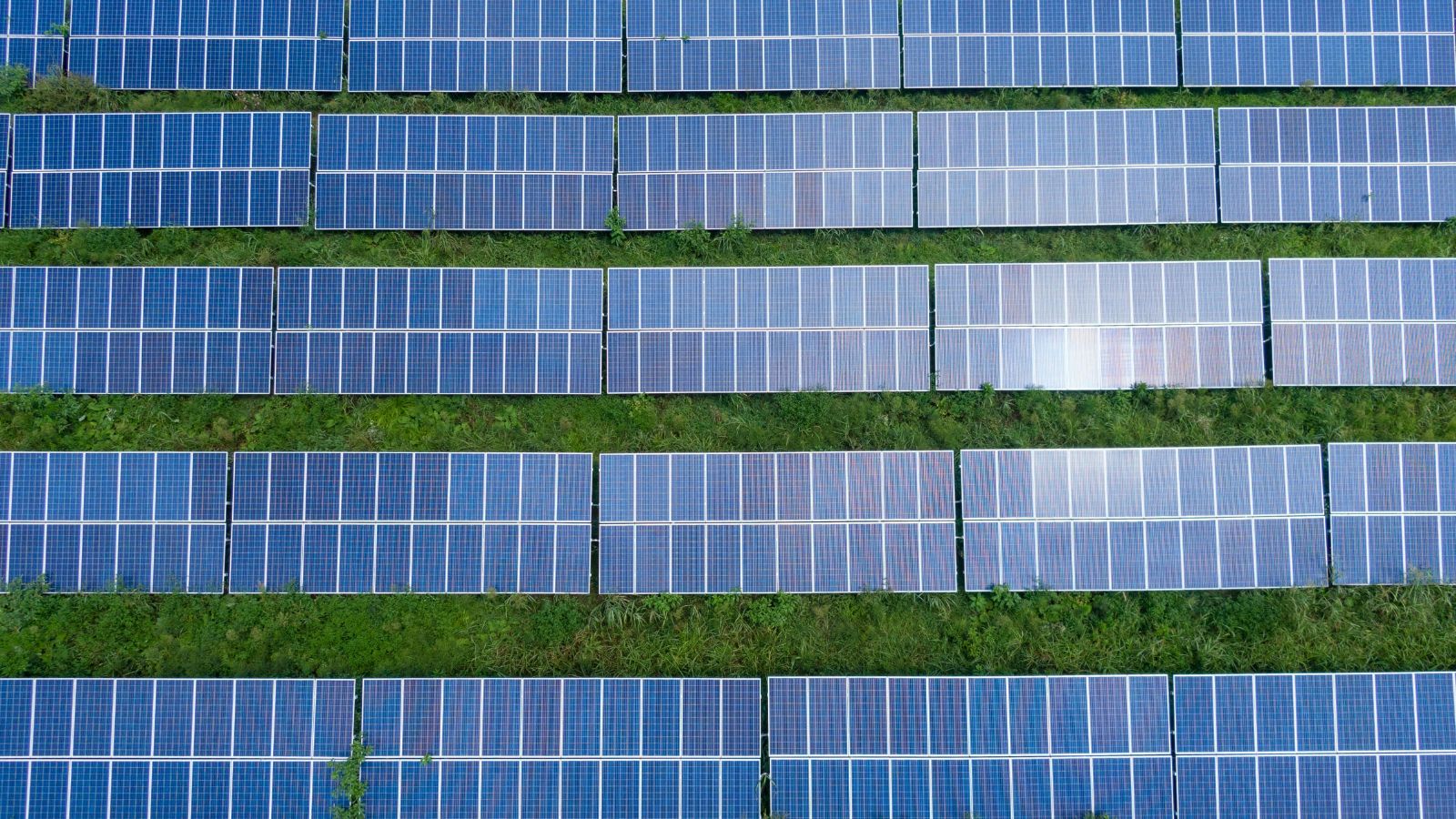Sustainable Energy
Soda cans can split seawater sustainably to free up green hydrogen
Engineers at MIT use seawater in addition to recycled aluminum from soda cans, to produce low-carbon hydrogen at scale.

Engineers at MIT have unveiled a potentially game-changing method to produce hydrogen that could drastically reduce the carbon footprint associated with the fuel’s production — a critical step in realizing hydrogen’s promise as a clean energy solution.
Their research, published in the peer-reviewed journal, Cell Reports Sustainability, combines seawater, recycled aluminum from soda cans, and a rare-metal alloy to generate hydrogen with a significantly lower environmental impact.
A full life-cycle analysis by the research team shows the process emits just 1.45 kilograms of carbon dioxide per kilogram of hydrogen produced — a dramatic drop from the 11 kilograms typically emitted by fossil-fuel-based methods.
“This work highlights aluminum’s potential as a clean energy source and offers a scalable pathway for low-emission hydrogen deployment in transportation and remote energy systems,” Aly Kombargi, the paper’s lead author said in a media statement.
A mechanical engineer, Dr. Kombargi had received their doctoral degree fairly recently. Their fellow coauthors include MIT researchers, Brooke Bao and Enoch Ellis. Whereas Douglas Hart, the professor in mechanical engineering, was cited as senior author.
A Clean Cycle
The MIT team first made headlines last year when they demonstrated a lab-scale reaction that turned seawater and aluminum treated with gallium-indium into hydrogen gas. The novelty lies in how the alloy strips aluminum of its protective oxide layer, allowing it to react with water and produce pure hydrogen. Crucially, the salt in seawater helps the gallium-indium alloy to precipitate out and be reused, adding to the process’s sustainability.
To evaluate its real-world viability, the researchers conducted a cradle-to-grave analysis of the process — from sourcing recycled aluminum to transporting the resulting hydrogen. They used Earthster, a life-cycle assessment platform, to calculate emissions and economic costs across various scenarios.
Their lowest-emission scenario relies on secondary (recycled) aluminum and readily available seawater, producing hydrogen at around $9 per kilogram — a price that matches other emerging green hydrogen technologies powered by solar or wind.
A New Model for Hydrogen Infrastructure
Unlike traditional hydrogen production, which requires complex storage and transport infrastructure, the MIT method could simplify the supply chain.
In the envisioned commercial model, aluminum pellets treated with gallium-indium would be transported — rather than the hydrogen itself — to fueling stations near coastal areas. There, the pellets would be combined with seawater to generate hydrogen on demand.
This approach not only sidesteps the risks of transporting volatile hydrogen gas, but also produces a potentially valuable byproduct: boehmite, an aluminum-based mineral used in semiconductors and industrial materials. Selling this byproduct could further reduce production costs.
“There are a lot of things to consider,” Kombargi noted, “but the process works — which is the most exciting part. And we show that it can be environmentally sustainable.”
Electric Bikes and Beyond
The team has already created a prototype reactor, about the size of a water bottle, capable of generating enough hydrogen to power an electric bike for hours. They have also demonstrated the system’s capacity to fuel a small car and are exploring underwater applications, including powering boats or autonomous submersibles using surrounding seawater.
As nations race to decarbonize energy systems, this MIT breakthrough points to a novel, scalable solution — one that turns common materials into a clean fuel source and may help bridge the gap to a hydrogen-powered future.
Sustainable Energy
How Better Storage and Smarter Grids Could Break India’s Heat–Power Loop
Heatwaves drove 9% of India’s power demand surge in summer 2024; researchers call for rapid investment in storage, smart grids and renewable-backed cooling systems.

As India battles increasingly severe heat waves that are pushing electricity demand to record highs, a new study warns that the country is trapped in a dangerous heat–power loop — and only rapid investment in renewable energy infrastructure, grid upgrades and storage can break it.
The report, Breaking the Cycle, released on 20 November 2025 by Climate Trends and Climate Compatible Futures, shows that heat waves alone contributed nearly 9% of the surge in national power demand during April–June 2024, driving up emissions and straining power systems across states.
The study finds that rising temperatures, heat waves, electricity demand and fossil-fuel use are “no longer separate problems but converging threats,” placing worsening pressure on India’s grid, public-health systems, and vulnerable communities.
Heat waves intensifying across India
The number of summer days crossing 40°C rose sharply in the latter half of the decade. Fourteen states recorded a 15% rise in heat intensity between 2015 and 2024.
Central and eastern states such as Madhya Pradesh, Jharkhand and Chhattisgarh faced an average of 50 heatwave days every year, while northern states including Delhi, Uttar Pradesh, Punjab and Haryana saw the steepest temperature spikes.
Himalayan regions also showed sharp warming: Uttarakhand recorded an 11.2% rise in summer temperatures in 2024, along with a dramatic jump in heatwave days — from zero in 2023 to 25 in 2024. Ladakh saw a 9.1% increase.
A decade of rising demand and fossil-heavy peaks
India’s power system expanded from 285 GW in 2015 to 461 GW in 2024. Renewable energy capacity more than doubled — from 84 GW to 209 GW — but coal capacity also increased from 195 GW to 243 GW.
While renewables grew faster in absolute terms, coal remained the backbone during summer peaks. Over the decade:
- RE generation rose 121%
- Fossil-fuel generation rose 50%
Heat waves have pushed cooling demand sharply, increasing dependence on coal-heavy power generation and worsening emissions.
A heat–power–emissions trap
The increase in heat during the 2024 summer added 327 million tonnes of CO₂ in just the peak months. Over the last decade, summertime fossil-fuel use led to 2.5 gigatonnes of CO₂ emissions.
“Our research shows that increase in temperatures across India has consistently increased electricity demand predominantly for cooling needs, resulting in further dependence on fossil fuels. Meeting the summer power demand surge with fossil fuels has led to more emissions and air pollution, exacerbating climate change and worsening health crisis,” Dr. Manish Ram, CEO at Climate Compatible Futures, said in a media statement.
He added that the impacts fall disproportionately on rural areas and low-income communities who already struggle with energy access and heat vulnerability.
Storage, flexible generation and grid upgrades essential
The report argues that India cannot address heat waves and power shortages separately. Instead, it calls for urgent, large-scale investment in:
- Battery storage and pumped hydro
- Flexible renewable generation
- Smart grids and resilient transmission
- Demand-side management
- Urban cooling and distributed solar backups
“States hit by heat-driven spikes in power demand must urgently expand renewable energy and storage capacities to reduce their dependence on fossil fuels,” Dr. Ram said. “Impacts of continued use of fossil fuel for power generation are now being seen even in states that are mostly dependent on renewable energy, which necessitates better integration of renewables with storage and smart grids.”
Heat Action Plans are missing critical energy links
The report found that only four states, three cities and one district currently integrate renewable energy or storage solutions into their Heat Action Plans (HAPs).
Most HAPs lack:
- Renewable backup systems
- Cooling demand forecasting
- Energy resilience measures
- Grid stress assessments
The study concludes that future frameworks must embed renewable-powered cooling, distributed storage and smart-grid planning.
A climate and equity imperative
India’s annual temperature in 2024 rose 0.65°C above the 1991–2020 baseline, in line with global trends. The study notes that while India’s broader climate policies saved up to 440 MtCO₂ between 2015 and 2020, heat-driven fossil-fuel use is eroding those gains.
Aarti Khosla, Director of Climate Trends, said in a statement, “India’s heat waves and power shortages can no longer be treated as separate crises. They are converging. The only durable way out is to urgently upgrade our grid, invest in storage and enable flexible, climate-resilient electricity systems.”
She added, “Breaking this cycle is not just a climate imperative — it is an equity imperative for millions of Indians who are the least responsible but the most vulnerable to extreme heat.”
COP30
Clean Energy Push Could Halve Global Warming by 2040, New Analysis Shows
A new Climate Action Tracker analysis shows that tripling renewables, doubling energy efficiency and cutting methane could halve global warming by 2040

A rapid global shift to renewable energy, energy efficiency and methane cuts could halve the rate of global warming by 2040, dramatically altering the world’s climate trajectory, a new Climate Action Tracker (CAT) assessment finds.
The analysis shows that implementing the three core COP28 energy and methane goals—tripling renewable energy capacity, doubling energy efficiency improvements, and delivering steep methane cuts by 2030—would bring down projected warming from the current 2.6°C to 1.7°C by the end of the century.
Crucially, these actions would sharply slow near-term warming, reducing the pace of temperature rise by a third by 2035 and nearly half by 2040, compared to today’s rate of ~0.25°C per decade. This slowdown is critical not just for long-term climate goals but for immediate survival, the report stresses.
A Turning Point
The world is already struggling to cope with accelerating climate impacts. With ecosystems collapsing faster than species can adapt and communities facing worsening heatwaves, storms and crop failures, “catching up” on adaptation has become a global emergency.
CAT warns that under current policies, warming could continue rising throughout the century, leaving governments perpetually behind on adaptation planning. But halving the warming rate would give both people and ecosystems a fighting chance to adjust.
A 0.9°C Improvement in the Global Outlook
If all countries implement the three goals, the resulting emission cuts—14 GtCO₂e by 2030 and 18 GtCO₂e by 2035—would reduce expected warming this century by 0.9°C, one of the most significant improvements since the Paris Agreement.
“This is the single biggest step governments can take this decade, using goals they have already negotiated and agreed to,” the report notes.
Where the Reductions Come From
- Tripling renewables: ~40% of total emission reductions
- Doubling energy efficiency: ~40%
- Methane cuts: ~20%, but delivering disproportionate warming benefits due to methane’s strong short-term impact
Finance Is the Missing Link
The report underscores that technology is not the barrier—finance is. Many emerging economies cannot deploy renewables or upgrade grids at the necessary pace without scaled-up international support.
Still, the authors say the pathway is feasible and grounded in technologies already available at commercial scale.
While the world is almost certain to overshoot 1.5°C by the early 2030s, the duration and magnitude of that overshoot will determine future levels of loss and damage. Delivering the COP28 energy and methane goals, the report concludes, is the most powerful tool the world currently has to limit that overshoot and avoid runaway climate impacts.
COP30
No Growth in Fossil Power This Year as Solar Output Hits Record High
Global fossil fuel generation expected to flatline in 2025 for the first time since the pandemic, as record solar and wind growth meet all new electricity demand, according to Ember’s Q3 Global Power Report.

The world’s power sector is on the verge of a historic turning point, with no growth in fossil fuel generation expected in 2025 for the first time outside of a global crisis year, according to the latest Q3 Global Power Report by the energy think tank Ember.
Record-breaking increases in solar and wind power have met — and even exceeded — the rise in global electricity demand in the first three quarters of 2025, pushing fossil fuel use into stagnation.
“Record solar power growth and stagnating fossil fuels in 2025 show how clean power has become the driving force in the power sector,” said Nicolas Fulghum, senior data analyst at Ember. “Historically a growth segment, fossil power now appears to be entering a period of stagnation and managed decline.”
Solar Surges, Fossils Stall
Between January and September 2025, solar generation rose by 498 terawatt-hours (TWh) — up 31% year-on-year — marking the largest increase ever recorded over a nine-month period. Wind power added another 137 TWh, growing 7.6% compared to 2024. Combined, solar and wind generation expanded by 635 TWh, exceeding the global demand rise of 603 TWh (2.7%).
Nuclear output grew modestly by 33 TWh, while hydropower declined by 54 TWh due to unfavourable weather conditions. As a result, fossil fuel generation remained virtually unchanged, falling by 17 TWh (–0.1%) compared to the same period last year.
Ember forecasts that this balance will continue through the end of 2025, leading to the first year since the Covid-19 pandemic in which fossil generation does not increase despite global demand growth.
Clean Power Takes the Lead
The rise of clean power has reshaped the global electricity mix. In the first three quarters of 2025, wind and solar accounted for 17.6% of global electricity generation, up from 15.2% during the same period in 2024. Meanwhile, fossil fuels’ share fell from 58.7% to 57.1%.
All renewables combined — including hydro, solar, and wind — now supply 34.2% of global electricity, surpassing coal’s share for the second consecutive year.
China and India Tip the Global Balance
A fall in fossil fuel generation in China (–52 TWh, –1.1%) and India (–34 TWh, –3.3%) has been pivotal in keeping global fossil growth flat.
In China, the drop signals a structural shift, as fast-expanding solar and wind capacity met all new electricity demand.
In India, the decline is described as temporary, resulting from milder weather conditions that reduced cooling demand and allowed renewable generation to offset the slower rise in electricity use.
“China, the largest source of fossil growth, has turned a corner, signalling that reliance on fossil fuels to meet growing power demand is no longer required,” said Fulghum.
Demand Growth Decoupled from Fossil Fuels
Ember notes that 2025 is expected to record the sixth-largest increase in electricity demand in history — around 831 TWh — yet fossil generation remains flat. This marks the first time a significant rise in global demand has been met entirely by clean sources.
Prior to this year, falls in fossil generation occurred only during global downturns — in 2009 (financial crisis) and 2020 (pandemic lockdowns).
A Managed Decline Begins
Ember’s analysis concludes that fossil fuel power is entering a new phase of “managed decline,” driven by the accelerating deployment of clean energy and moderated electricity demand. The challenge, the think tank says, lies in sustaining renewable growth to achieve deeper cuts in fossil generation beyond 2025.
“Solar power has replaced fossil fuels as the dominant driver of growth in the power sector,” the report states. “The task now is to sustain this momentum in 2026 and beyond — not only to meet rising demand but to actively drive down fossil generation.”
-

 Know The Scientist6 months ago
Know The Scientist6 months agoRemembering S.N. Bose, the underrated maestro in quantum physics
-

 Society5 months ago
Society5 months agoShukla is now India’s first astronaut in decades to visit outer space
-

 Space & Physics4 months ago
Space & Physics4 months agoJoint NASA-ISRO radar satellite is the most powerful built to date
-

 Space & Physics4 months ago
Space & Physics4 months agoNew double-slit experiment proves Einstein’s predictions were off the mark
-

 The Sciences5 months ago
The Sciences5 months agoHow a Human-Inspired Algorithm Is Revolutionizing Machine Repair Models in the Wake of Global Disruptions
-

 Society6 months ago
Society6 months agoWhy the Arts Matter As Much As Science or Math
-

 Society6 months ago
Society6 months agoAxiom-4 will see an Indian astronaut depart for outer space after 41 years
-

 Earth6 months ago
Earth6 months agoWorld Environment Day 2025: “Beating plastic pollution”








































Pingback: Trash To Treasure: Soda Cans And Seawater Fuel Revolutionary Clean Hydrogen Breakthrough - AlternativeEnergyReport